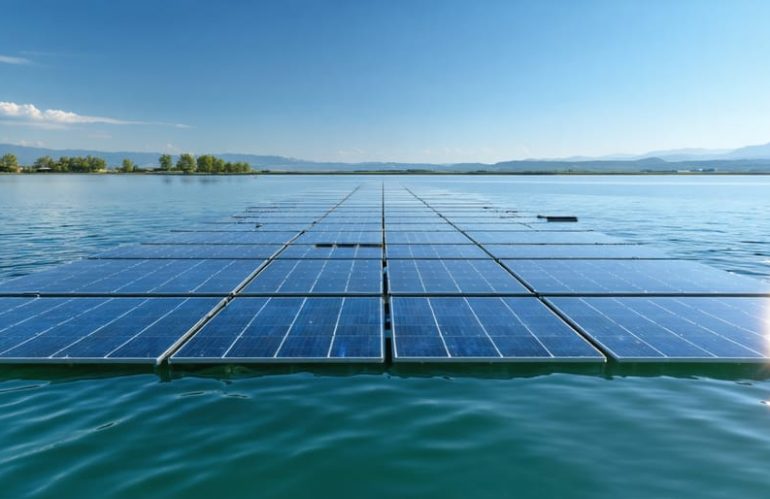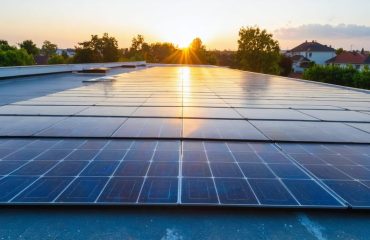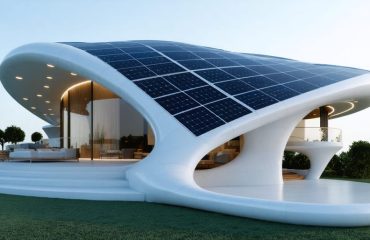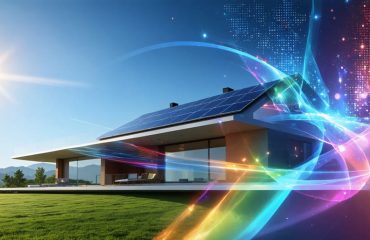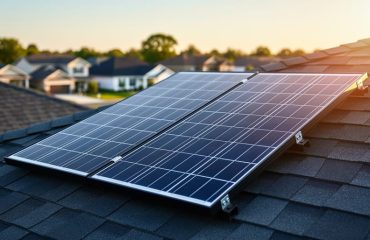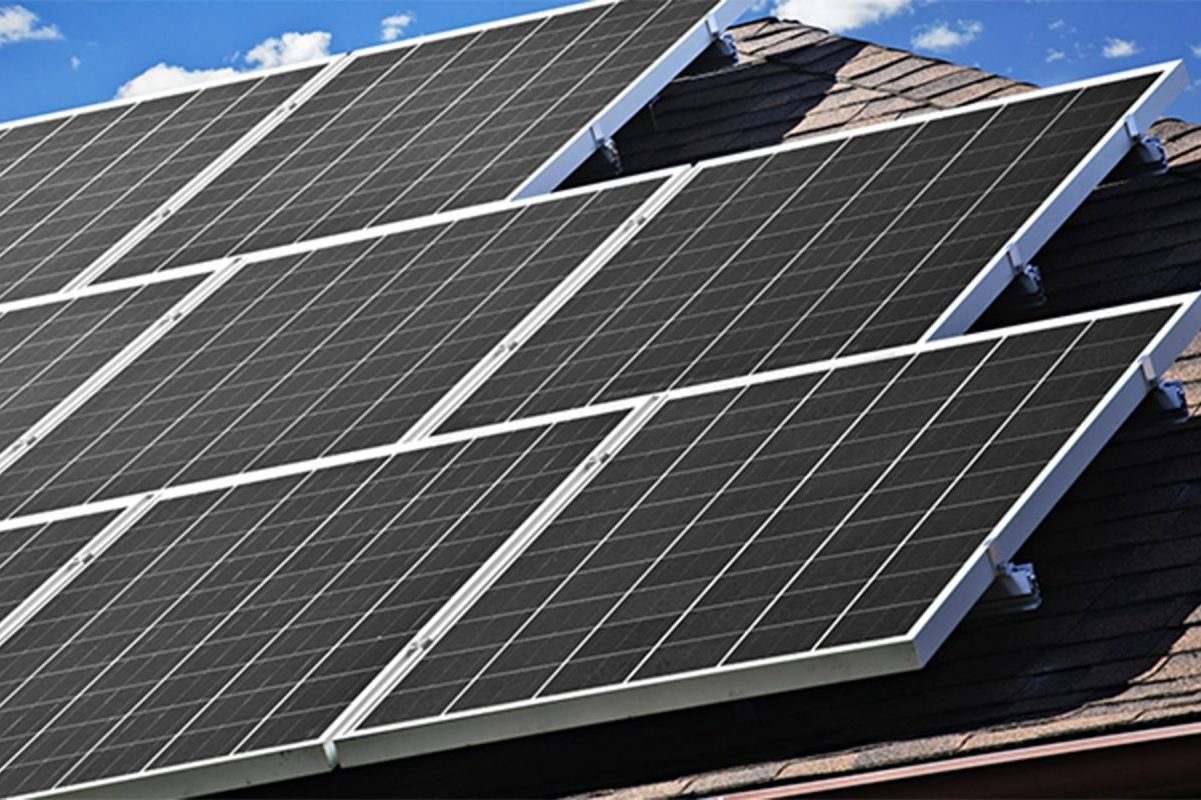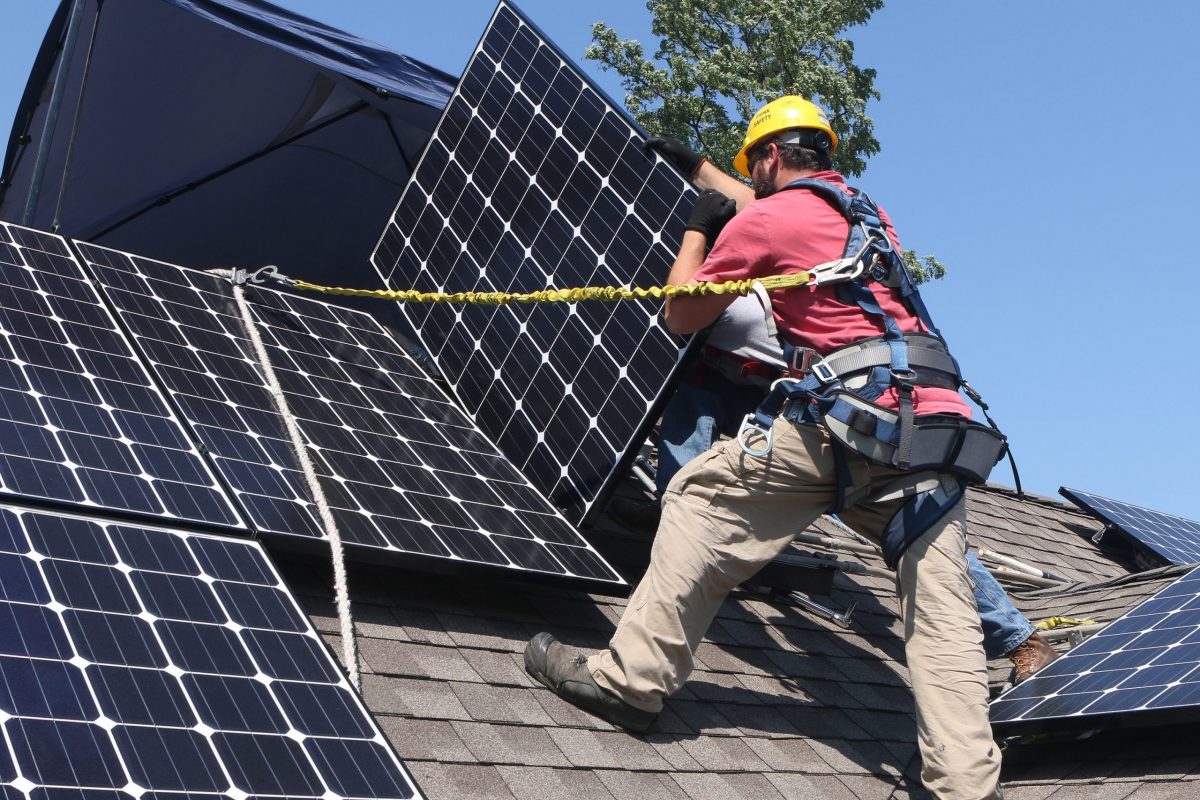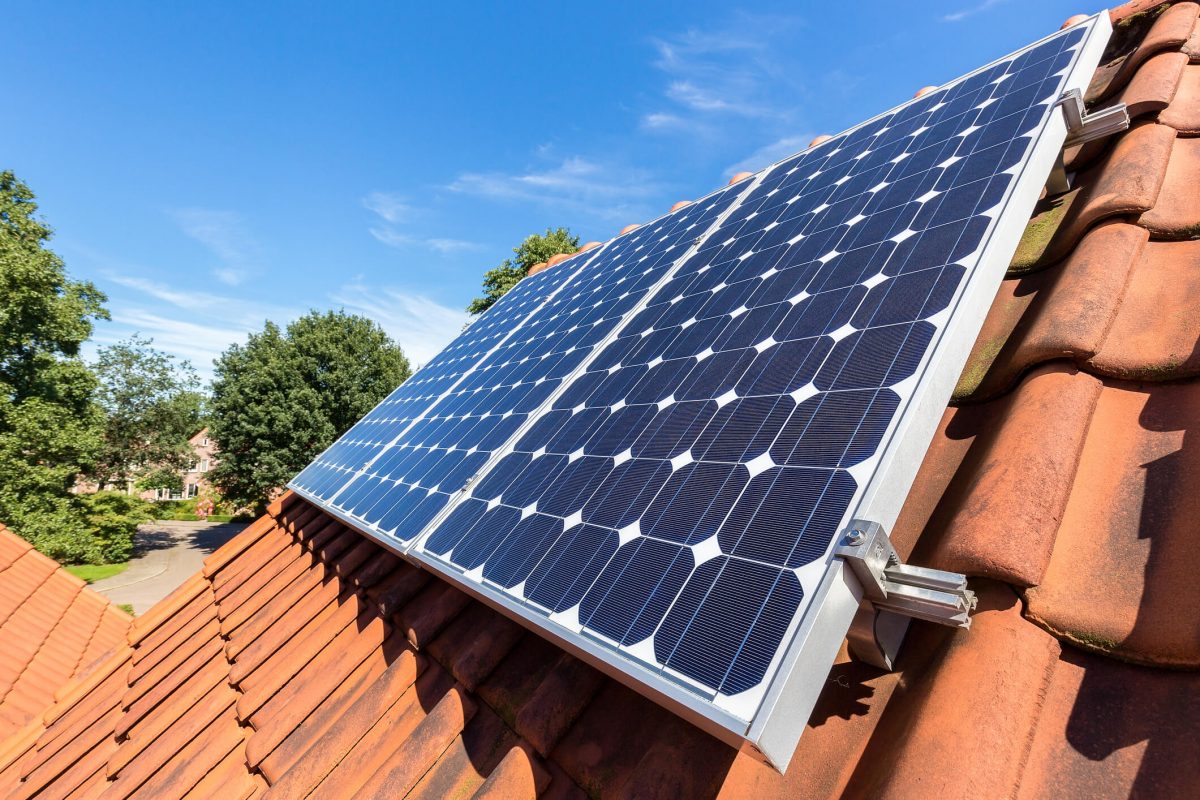Imagine vast arrays of solar panels gracefully floating on lakes and reservoirs, turning previously unused water surfaces into clean energy powerhouses. These innovative floating solar farms – also known as “floatovoltaics” – represent one of the most exciting developments in renewable energy technology today. By combining water and solar power, these installations are revolutionizing how we think about sustainable energy production.
Unlike traditional land-based solar arrays, floating solar farms offer a unique solution to one of renewable energy’s biggest challenges: finding suitable space for large-scale installations. These water-based systems not only generate clean electricity but also reduce water evaporation, prevent algae growth, and operate more efficiently thanks to the natural cooling effect of water.
From modest installations on irrigation ponds to massive utility-scale projects covering hundreds of acres, floating solar farms are proving that innovation in renewable energy knows no bounds. As communities worldwide seek sustainable solutions to their energy needs, these floating power plants offer a glimpse into the future of clean energy production.
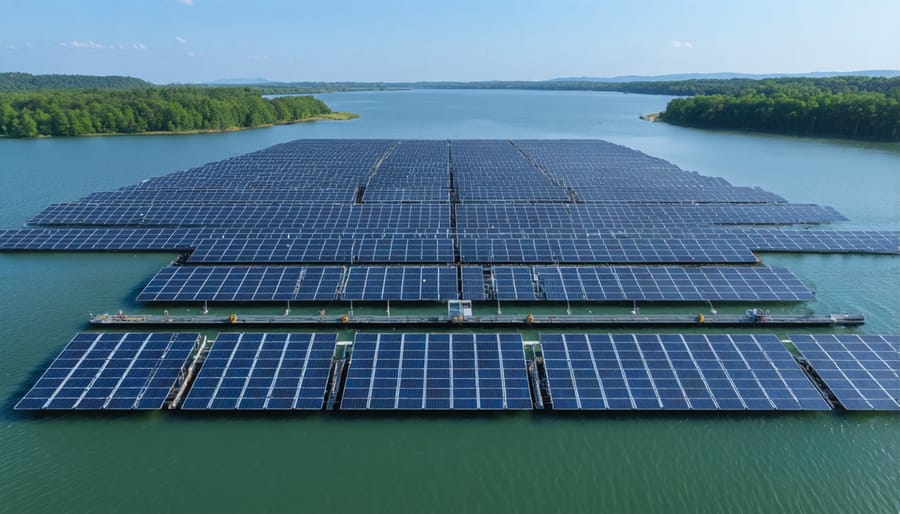
How Floating Solar Farms Work
The Floating Platform System
The foundation of floating solar farms lies in their innovative platform system, which consists of high-density polyethylene (HDPE) pontoons. These durable, UV-resistant floating structures are specifically designed to support solar panels while adapting to changing water levels. Think of them as a giant, stable raft that keeps your solar panels safely above water.
The mounting system uses a combination of anchoring points and flexible mooring lines, allowing the entire structure to rise and fall with water levels while staying securely in place. Special rubber bumpers and joints between platforms help absorb wave motion and protect the equipment from damage.
Each pontoon platform typically supports 2-4 solar panels and includes maintenance walkways for easy access. The platforms are designed with cooling channels underneath, which allow water to naturally cool the solar panels, improving their efficiency by up to 15% compared to land-based systems.
The entire structure is engineered to withstand severe weather conditions, including high winds and heavy rain, while maintaining optimal panel positioning for maximum sun exposure. This reliable design has proven successful in installations worldwide, from calm reservoirs to choppy coastal waters.
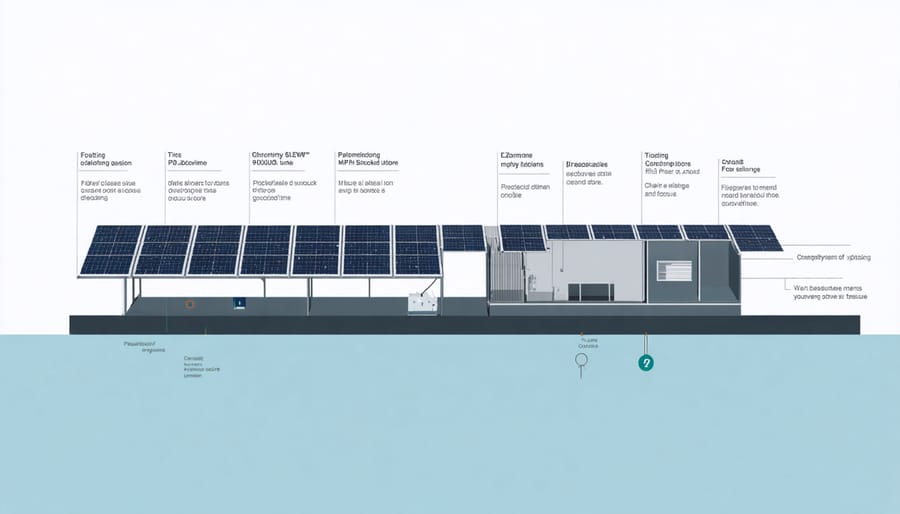
Solar Panel Configuration
Floating solar farms utilize specialized panel configurations designed specifically for water-based installations. The panels are mounted on high-density polyethylene (HDPE) floats, creating a stable platform that moves gently with the water’s surface. These floating structures are arranged in rows with carefully calculated spacing to maximize sun exposure while allowing for maintenance access.
Modern floating solar installations incorporate advanced solar cell technology with enhanced water-resistant features. The panels are sealed with marine-grade materials and protected by special coatings that prevent water damage and resist corrosion from constant exposure to moisture.
The cooling effect of water helps maintain optimal panel temperature, improving efficiency by up to 15% compared to land-based systems. Panel arrays are typically connected via flexible cables with waterproof connectors, allowing them to adjust to wave movement while maintaining electrical integrity. The entire system is anchored to the reservoir bottom or sides using innovative mooring systems that keep panels properly oriented while adapting to changing water levels.
Key Benefits of Water-Based Solar
Enhanced Energy Production
The cooling effect of water provides floating solar farms with a significant advantage over their land-based counterparts. When solar panels heat up, their efficiency typically decreases – but water acts as a natural cooling system, helping maintain optimal operating temperatures. Much like double-sided solar panels, floating installations benefit from their environment to maximize energy production.
Studies show that floating solar panels can be up to 15% more efficient than traditional ground-mounted systems, thanks to this cooling effect. The water beneath the panels absorbs excess heat, preventing the temperature-related performance drops that commonly affect land-based installations during hot weather. This natural cooling process is particularly beneficial in warmer climates, where conventional solar panels might struggle to maintain peak efficiency.
Additionally, the reflective surface of the water can boost energy production by capturing indirect sunlight that bounces off the water’s surface. This effect, combined with the cooling benefits, helps floating solar farms generate more electricity throughout the year, making them an increasingly attractive option for clean energy production.
Land Conservation Benefits
Floating solar farms offer a brilliant solution to one of renewable energy’s biggest challenges: land use. By installing solar panels on water bodies, these innovative systems preserve valuable land that can be used for agriculture, housing, or conservation. A typical 1-megawatt floating solar installation saves approximately 4-5 acres of land compared to ground-mounted systems.
The space-saving benefits are particularly impressive when you consider that many suitable water bodies, such as irrigation ponds and reservoirs, are already being used for other purposes. This dual-use approach means we can generate clean energy without competing for precious land resources. For instance, water treatment facilities can use their existing basins to generate power while continuing their primary function.
Industrial sites, farms, and municipalities can maximize their property value by turning otherwise unused water surfaces into power-generating assets, effectively getting double duty from their water resources.
Water Conservation Features
Floating solar panels do more than generate clean energy – they’re also powerful water conservation tools. By covering the water’s surface, these innovative installations can reduce evaporation by up to 70% in reservoirs and irrigation ponds. This is particularly valuable in drought-prone regions where every drop counts.
The panels create beneficial shade that limits algae growth, improving water quality naturally. This reduction in algae means less filtering is needed for drinking water facilities, cutting down on treatment costs and energy usage. The cooler water temperatures under the panels also help maintain healthier oxygen levels for aquatic life.
Water bodies with floating solar installations typically show lower maintenance needs due to decreased organic growth and evaporation. For water utilities and irrigation districts, this means significant savings on water loss and treatment chemicals while supporting local ecosystems. The shade from the panels can even help reduce the formation of harmful algal blooms that often plague warm, sunny waterways.
Real-World Success Stories
Notable Projects
Several groundbreaking floating solar projects have demonstrated the incredible potential of this technology. China’s Huainan installation, completed in 2017, stands out with its impressive 150-megawatt capacity – enough to power 50,000 homes. Built on a former coal mining area that had flooded, it perfectly illustrates how abandoned sites can be transformed into clean energy generators.
In Singapore, the Tengeh Reservoir project showcases innovation on a smaller scale, featuring 122,000 solar panels that supply 5% of the nation’s drinking water treatment energy needs. This installation cleverly combines renewable energy production with water conservation, making it a model for space-efficient sustainable development.
The Netherlands has also embraced floating solar technology with the Bomhofsplas installation, which features unique double-sided panels that capture both direct sunlight and light reflected off the water’s surface. This innovative design increases energy production by up to 25% compared to traditional solar arrays.
These successful projects have paved the way for numerous other installations worldwide, proving that floating solar farms are not just experimental technology but a practical solution for clean energy generation.

Performance Data
Real-world data from floating solar installations has shown impressive performance metrics. In Singapore, a 60-megawatt floating solar farm generates enough clean energy to power 16,000 homes, reducing carbon emissions by about 32 kilotonnes annually. Studies have found that floating solar panels are typically 5-10% more efficient than traditional land-based installations due to the cooling effect of water.
The world’s largest floating solar farm in China’s Anhui Province has exceeded expectations, achieving a remarkable 23% higher energy yield compared to conventional ground-mounted systems. This enhanced performance is attributed to reduced panel temperature and minimal dust accumulation.
In Portugal, the Alqueva reservoir’s floating solar installation demonstrates consistent daily power generation of 7.5 gigawatt-hours annually, enough to supply 1,500 households. The project shows minimal performance degradation even during summer months, maintaining efficiency rates above 95%.
Maintenance costs have proven lower than expected, with panels requiring cleaning only twice yearly. The water-based cooling effect extends panel lifespan by approximately 15%, offering better long-term value for investors and communities alike.
Future Prospects
The future of floating solar farms looks incredibly promising, with experts predicting significant growth in the coming decades. Industry analysts forecast that the global floating solar market could expand by over 20% annually through 2025, driven by increasing demand for clean energy and the need to optimize land use. This growth is particularly expected in regions with limited land availability but abundant water resources.
Technological innovations are set to make floating solar installations even more efficient and cost-effective. Advances in flexible solar technology are enabling the development of more durable and adaptable floating systems that can better withstand various weather conditions. Engineers are also working on enhanced cooling systems that take advantage of the water’s natural cooling properties to boost panel efficiency.
Upcoming developments include smart monitoring systems that use AI to optimize panel positioning and energy production, as well as innovative materials that reduce installation costs while increasing durability. Hybrid systems that combine floating solar with other renewable technologies, such as wind power or hydroelectric dams, are also showing great potential.
Communities can look forward to more accessible floating solar options, with smaller-scale installations becoming available for local reservoirs and community water bodies. This democratization of floating solar technology will make it easier for neighborhoods and small municipalities to adopt this sustainable energy solution.
Floating solar farms represent a groundbreaking solution in our journey toward a sustainable energy future. By combining the efficiency of solar power with innovative water-based installations, these systems offer a powerful answer to land scarcity while maximizing renewable energy production. Their ability to work alongside hydroelectric facilities, reduce water evaporation, and generate clean electricity makes them an invaluable addition to our renewable energy portfolio.
As climate change concerns grow and energy demands increase, floating solar farms provide a practical and efficient way to meet these challenges head-on. Their dual benefits of energy generation and water conservation make them particularly attractive for regions facing both power and water management challenges. The technology’s rapid advancement and decreasing costs suggest that floating solar will play an increasingly important role in our energy landscape.
For communities, utilities, and governments looking to invest in sustainable energy solutions, floating solar farms offer a compelling option that maximizes existing resources while minimizing environmental impact. As we move toward a cleaner, more sustainable future, these innovative installations will undoubtedly continue to evolve and contribute significantly to our renewable energy goals.

